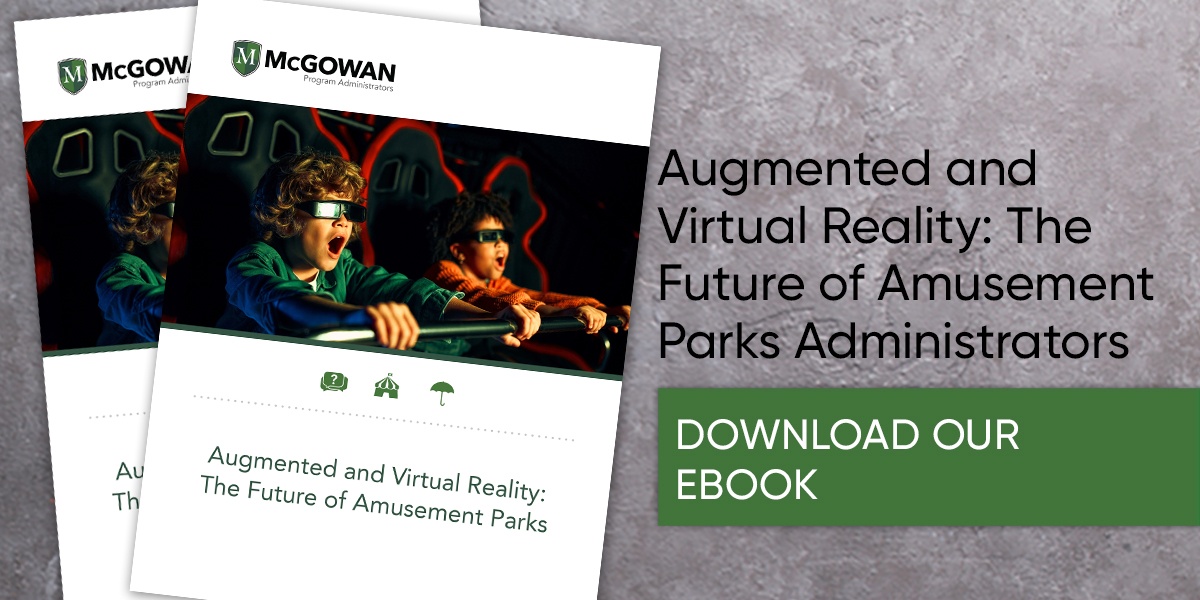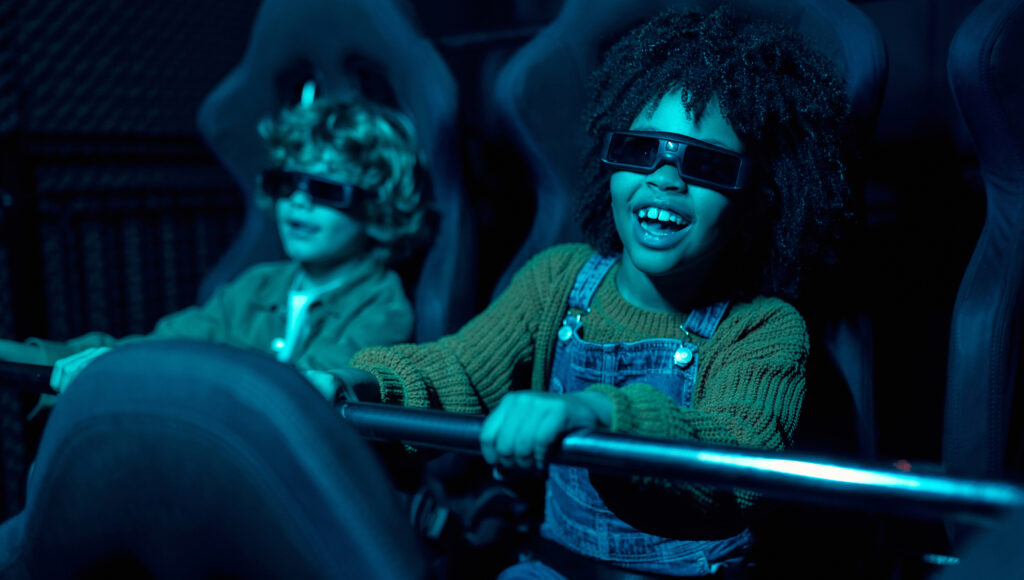Amusement parks are always looking for new ways to thrill their guests. That might have meant animatronics and boat rides in the past, but today, the digital world is becoming a significant player in our entertainment.
The reality is that the digital world is increasingly blending with our real world. Augmented and virtual reality (AR and VR) are seeing applications in everything from gaming to the automotive industry. One only has to look at Apple’s new Vision Pro to understand how the tech giant views these technologies as potential futures for its brand, and the 20 million units sold of the Meta Quest 2 (Meta’s flagship VR headset) speak for themselves.
Amusement parks have always used the latest technology to find new ways of providing exhilarating thrills, and AR and VR will be no different. The rise of AR and VR is already having the same knock-on effect, from AR-enhanced rollercoasters to entirely virtual parks. Now is the time for park managers to understand the potential of these technologies and learn how to address any challenges during their implementation.
Read more about today’s amusement and entertainment trends.
AR and VR: What’s the difference?
The simple differentiator is that augmented reality doesn’t take the user out of the real world, while virtual reality fully immerses a user in a computer-generated environment.
For example, a pair of AR glasses may allow employees to see a virtual representation of their workspace, such as the Word app. The glasses display the app as floating in the air in front of the wearer, but the real world is still there behind it, and the user never feels disconnected from that tactile environment. While having obvious applications in productivity, AR also allows for training, communication, and even marketing in a more hands-free, interactive way.
A VR headset like the Quest 2 instead covers multiple senses to trick the brain into believing it is in a virtual world. These senses are typically sight and sound. Therefore, the user both sees and hears the computer-generated, three-dimensional virtual environment around them. Motion-tracked controllers allow the user to interact with the environment, further providing a feeling of immersion. Virtual environments are seeing applications in education (such as allowing users to step aboard the International Space Station), training in healthcare or the military, and even testing products before producing them, such as in the automotive industry.

AR and VR in today’s amusement parks
These technologies have powerful potential for immersion and interactivity. The applications for amusement parks quickly become clear; a Spider-Man ride sounds more exciting if Spider-Man himself is swinging alongside the parkgoer. In fact, this ride already exists at Universal Studios Orlando.
Currently, augmented and virtual reality amusement parks deliver three primary experiences:
- Immersion: Placing parkgoers in virtual environments so they never have to leave an empty room while still feeling like they’ve had a state-of-the-art, unforgettable experience.
- Augmentation: Using AR to create an interactive, digital overlay. Thrill-seekers can shoot digital creatures, see water spraying in their face, or otherwise have virtual elements interact with the real-world ride they are on.
- Home: Where users can sit at home and use AR or VR to have the same thrills as going to an amusement park.
Read about the importance of venue safety risk assessments.
The possibilities are endless
The next generation is already highly accustomed to virtual worlds. Meta’s Quest 2 is the world’s best-selling headset, and it lowered the user age from thirteen to ten this year, meaning more children will be able to use it than ever before. Parks must provide experiences that children who are already used to seeing fantastical visuals from a device they have in their home.
Interactivity is the name of the game. The new Mario Kart: Koopa’s Challenge ride at Super Nintendo World uses AR glasses that allow users to shoot virtual enemies and collect points throughout the ride. Almost any ride can be enhanced with AR and VR in this way, meaning park managers can deliver new, even customizable experiences that are tailor-made for each parkgoer.
Additionally, cost-savings are a significant element of why AR and VR are so attractive for amusement parks. Creating a virtual environment can be a less expensive way to deliver elaborate set pieces and can be switched out for new ones more easily. Investment is following suit, with millions spent on VR projects in traditional theme parks and billions to create entirely augmented and virtual reality theme parks.
Creating the augmented and virtual reality theme parks of the future
There are still challenges to overcome in implementing AR and VR technology. Some include:
- Cleanliness: Headsets become dirty after use and must be cleaned, especially in rides that require the guest to move around a room in the real world.
- Comfort: VR and AR have been known to cause motion sickness, or their weight can be uncomfortable.
- Efficiency: Activities like educating guests on how to use the technology or even putting headsets on take up time, even causing delays.
- Maintenance and upkeep: AR and VR technologies are advancing at incredible rates, meaning devices may have to be constantly updated or even replaced to keep pace with visitor expectations.
- Training: Implementing any new technology will require staff to be trained to use it and guide guests through the experience.
Innovative solutions are being found every year, such as headsets being split in two. The visor is put on while the guest is queuing, while a cable connects the visor to the ride when they sit down. This addresses the weight issue, as the power bank and other supporting technologies are housed in the ride. The visor simply becomes a display, and the reduced time needed to be educated on the technology and put it on means the guest wears the headset for less time (reducing cleanliness issues as well).
As AR and VR technology continues to advance, and amusement parks find new ways to address emerging challenges, the augmented and virtual reality amusement parks of the future can soon seem commonplace. Already, fully dedicated VR theme parks are opening in China with its VR Star Theme Park, while the world’s largest VR theme park, VR Park Dubai, has been operating since 2018.
The amusement park industry has always used the latest technology to excite and attract visitors. AR and VR are no different. Park managers should look at how they can begin investing or implementing these technologies in their parks and meet the expectations of an increasingly digital consumer base. The amusement park of the future may well be a virtual one.
Check out our E-book: Augmented and Virtual Reality: The Future of Amusement Parks
Safeguard your park with McGowan insurance coverage
McGowan MPA offers highly customizable insurance policies tailored to the needs and risks associated with a vast array of amusement establishments, such as water parks, family entertainment centers, Go Kart tracks, miniature gold, roller skating rinks, festivals, and rodeos. Partnering with McGowan to safeguard your park gives you the assurance of comprehensive protection should the worst happen.


